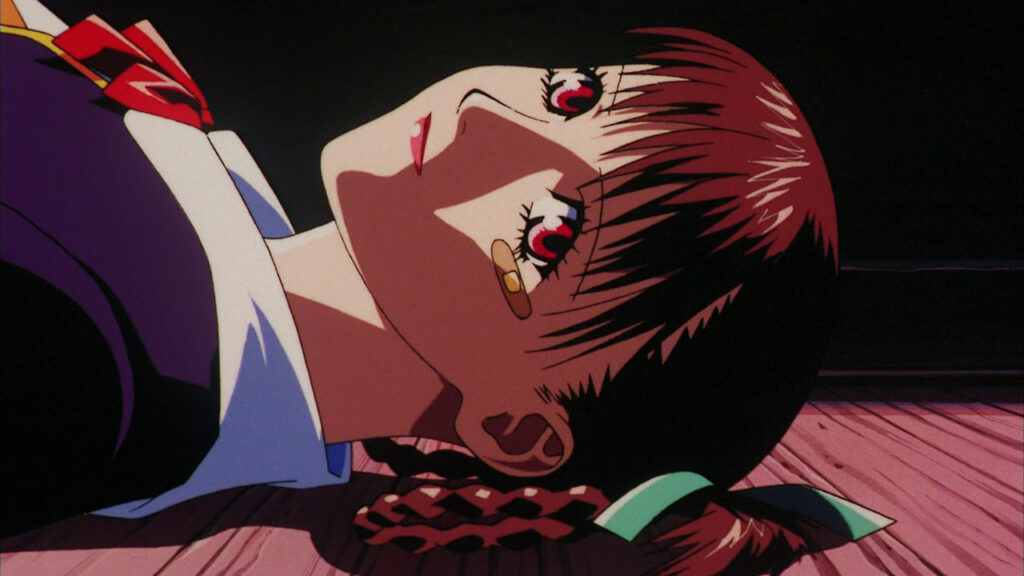
Yasuomi Umetsu’s Kite (1998) is a three part OVA that has subsequently been edited and released as a single feature film. As an OVA Kite wasn’t subject to the same censorship as films made for theatrical and broadcast release having gone directly to the home video market. Filmmaker Yasuomi Umetsu takes full adavntage of this, indulging in some of the most violently gory fantasies of physical mutilation and sexual abuse. There is more savagery in the fifty-five minute runtime of Kite than in any other film I have ever seen.
Umetsu, in keeping with his signature style, takes his predilection for extreme violence and focuses it into a specific genre mold, which in this case is the Neo-Noir. But Kite also crosses tropes of the Neo-Noir film with the pinku film, particularly the rape-revenge sub-genre. The spectacles Umetsu offers his viewer fall into what are essentially three distinct genres. First there is Neo-Noir which accounts for the pessimistic outlook of the characters and the manner in which location and light is handled. Then there is the pinku/hentai film that, rather obviously, encompasses all of the sex scenes and the general objectification of the protagonist Sawa. Lastly Kite handles its action scenes with the operatic flourishes of John Woo and Luc Besson. In this milieu of intersecting filmic traditions Yasuomi Umetsu tells the story of a young assassin named Sawa.
There’s plenty that’s disturbing in Kite, but most of that occurs on a surface level. What goes deeper is how Yasuomi Umetsu graphically articulates the relationships between Sawa and her handlers Akai and Kanie. Akai found Sawa when she was hardly a teenager after her parents were murdered. He took her in and, along with Kanie, taught her to be an assassin. Akai essentially employs Sawa to do the work he cannot do as a police detective. But he has also, since meeting Sawa, been engaging her in sexual acts. This moral contradiction and the explicit way that Umetsu reveals it to the viewer is profoundly unsettling.
Kite, since its release, has had a major impact; one can see its influence in the films of Quentin Tarantino. Beyond appealing to the fetishist mind of Tarantino, Kite has also developed a rather large and very loyal cult following. It’s a tale of revenge and violent exploitation that is dramatically engrossing. Yet Kite, for all this ugliness, is beautifully animated.
